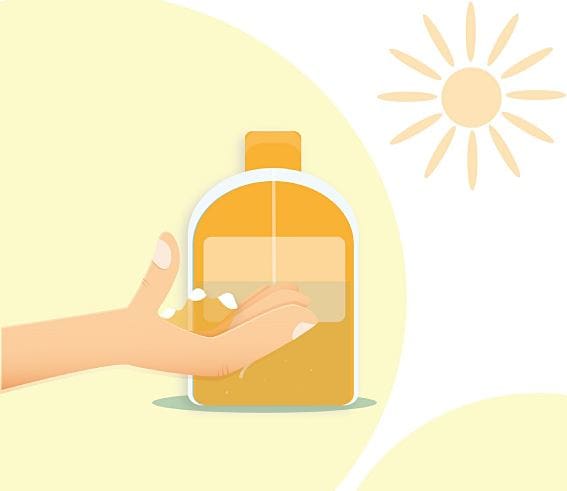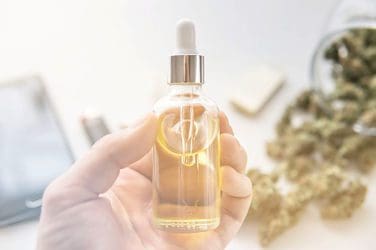words Alexa Wang
Sun protection is essential for maintaining healthy skin and preventing damage caused by harmful ultraviolet (UV) rays. While many people focus on applying sunscreen to their faces, full body sun protection is crucial for safeguarding every part of your skin from the sun’s potentially harmful effects. This comprehensive guide explores various strategies and products for protecting your entire body from head to toe. From choosing the right sunscreen to selecting sun-protective clothing, this guide will provide you with practical tips to ensure you enjoy the outdoors while keeping your skin safe and healthy.
Protecting Your Body
To ensure full-body sun protection, apply sunscreen to all exposed areas of your skin, including often-missed spots like the back, shoulders, and legs. For additional coverage, consider wearing a sun shirt and other sun-protective clothing. Many brands offer clothing made from fabrics with built-in UV protection, rated as UPF (Ultraviolet Protection Factor). These garments provide an extra layer of defense against harmful UV rays. Long-sleeved shirts, pants, and skirts made from UPF-rated fabrics are ideal for extended sun exposure. Additionally, seek shade during peak sunlight hours and limit prolonged sun exposure to reduce your risk of sun damage.
Understanding UV Rays and Their Impact
To effectively protect your skin, it’s important to understand UV rays and their impact on your health. Ultraviolet (UV) radiation from the sun consists of UVA and UVB rays, both of which can cause skin damage. UVA rays penetrate deeper into the skin, contributing to premature aging and wrinkles, while UVB rays are responsible for sunburns and can increase the risk of skin cancer. Prolonged exposure to these rays can damage the skin’s DNA, leading to long-term health issues. By understanding the different types of UV radiation and their effects, you can better appreciate the importance of comprehensive sun protection.
Choosing the Right Sunscreen
Selecting the right sunscreen is a fundamental step in achieving full-body sun protection. Look for a broad-spectrum sunscreen with an SPF (Sun Protection Factor) of at least 30. Broad-spectrum sunscreens protect against both UVA and UVB rays, offering comprehensive coverage. Additionally, choose a water-resistant formula if you plan to swim or engage in activities that cause sweating. For sensitive skin, opt for sunscreens labeled as hypoallergenic or suitable for sensitive skin. Apply sunscreen generously to all exposed areas of your skin, and reapply every two hours, or more frequently if swimming or sweating.
Protecting Your Face
The face is particularly vulnerable to sun damage, so extra care is needed to protect this sensitive area. In addition to applying sunscreen specifically designed for the face, consider using a facial moisturizer with built-in SPF. These products offer additional hydration while protecting against UV rays. Don’t forget to apply sunscreen to your ears, neck, and any other exposed areas, as these areas are also susceptible to sun damage. For added protection, wear a wide-brimmed hat to shield your face from direct sunlight and reduce the risk of sunburn.
Safeguarding Your Eyes
Your eyes are vulnerable to UV radiation, which can lead to conditions such as cataracts and macular degeneration. To protect your eyes, wear sunglasses that provide 100% UV protection. Choose sunglasses that block both UVA and UVB rays and cover the entire eye area. Polarized lenses can also reduce glare and enhance visual comfort. Additionally, wearing a hat with a brim can further shield your eyes from direct sunlight. By incorporating these protective measures, you can safeguard your eyes from the harmful effects of UV radiation.
Shielding Your Hair and Scalp
While often overlooked, the hair and scalp also require sun protection. UV rays can damage the hair shaft, leading to dryness and color fading. For added protection, wear a hat or use hair products that contain UV filters. If you prefer not to wear a hat, consider applying a UV-protective hair spray or leave-in conditioner to shield your hair from sun exposure. The scalp can be particularly vulnerable, so using a broad-brimmed hat or applying sunscreen designed for the scalp can prevent sunburn and reduce the risk of skin cancer.
Staying Hydrated
Staying hydrated is an essential part of sun protection, as dehydration can exacerbate the effects of sun exposure. Drinking plenty of water throughout the day helps maintain your skin’s moisture levels and supports overall health. When spending time outdoors, particularly in hot weather, increase your fluid intake to compensate for the loss of moisture due to sweating. Proper hydration also helps your skin recover from sun exposure and reduces the risk of heat-related issues such as heat exhaustion or heatstroke.
Achieving full body sun protection involves a comprehensive approach that includes selecting the right sunscreen, wearing sun-protective clothing, and adopting other protective measures. By understanding the impact of UV rays and utilizing effective strategies to safeguard your skin, you can enjoy the outdoors while minimizing the risk of sun damage. From your face and eyes to your hair and body, every part of your skin deserves protection from harmful UV radiation. Incorporate these tips into your sun protection routine to ensure a safe and healthy experience in the sun.











